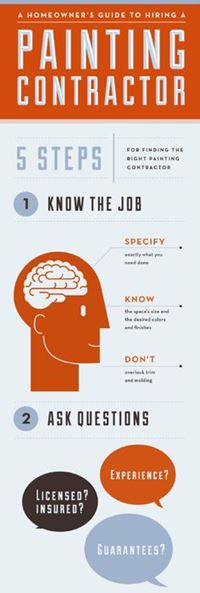Learn About The Ways In Which Seasonal Aspects Can Affect The Success Of Commercial Outside Paint And Identify The Most Effective Times To Attain Lasting Outcomes For Your Project
Learn About The Ways In Which Seasonal Aspects Can Affect The Success Of Commercial Outside Paint And Identify The Most Effective Times To Attain Lasting Outcomes For Your Project
Blog Article
straitline painting -Doherty Chaney
When you're planning a commercial external paint task, seasonal aspects can make or damage your outcomes. straight line paint 'll want to think about how temperature level and humidity effect paint application and drying out times. Choosing the ideal period can ensure your paint sticks appropriately and lasts longer. But which periods are genuinely the most effective for this type of work? Allow's discover the crucial elements that can influence your task's success.
The Impact of Temperature Level on Paint Application
When you're planning an industrial exterior painting task, the temperature can considerably influence how well the paint sticks and dries out.
Ideally, you want to paint when temperatures vary between 50 ° F and 85 ° F. If it's as well chilly, the paint may not heal effectively, leading to issues like peeling or breaking.
On the other side, if it's as well hot, the paint can dry as well quickly, protecting against proper adhesion and causing an irregular surface.
You should also take into consideration the moment of day; early morning or late afternoon uses cooler temperature levels, which can be more favorable.
Always check the maker's recommendations for the details paint you're making use of, as they usually supply assistance on the ideal temperature level range for optimum outcomes.
Moisture and Its Effect on Drying Times
Temperature isn't the only environmental element that influences your business exterior painting task; moisture plays a substantial role too. High humidity levels can slow down drying times drastically, influencing the general top quality of your paint task.
When the air is filled with wetness, the paint takes longer to heal, which can cause issues like bad bond and a higher danger of mildew development. If you're painting on a particularly humid day, be prepared for extensive wait times in between coats.
It's essential to keep an eye on local climate condition and strategy appropriately. Ideally, go for humidity levels in between 40% and 70% for optimal drying.
Keeping these factors in mind guarantees your task stays on track and provides an enduring surface.
Best Seasons for Commercial Exterior Paint Projects
What's the very best season for your commercial external paint tasks?
Spring and early autumn are usually your best choices. During these periods, temperatures are mild, and moisture levels are usually lower, creating excellent conditions for paint application and drying out.
Stay clear of summer's intense heat, which can cause paint to dry also rapidly, leading to inadequate adhesion and finish. Similarly, winter months's cold temperatures can hinder correct drying and healing, running the risk of the long life of your paint job.
Go for days with temperatures in between 50 ° F and 85 ° F for ideal results. Bear in mind to check the neighborhood weather report for rain, as wet problems can wreck your job.
Planning around these aspects guarantees your painting project runs smoothly and lasts much longer.
Verdict
To conclude, preparing your industrial external painting tasks around seasonal factors to consider can make a substantial difference in the result. By scheduling job throughout the ideal temperatures and humidity levels, you'll make certain much better adhesion and drying out times. Bear in mind to watch on local weather prediction and select the correct time of year-- springtime and very early autumn are your best bets. Taking these steps will help you achieve a durable and expert surface that lasts.
